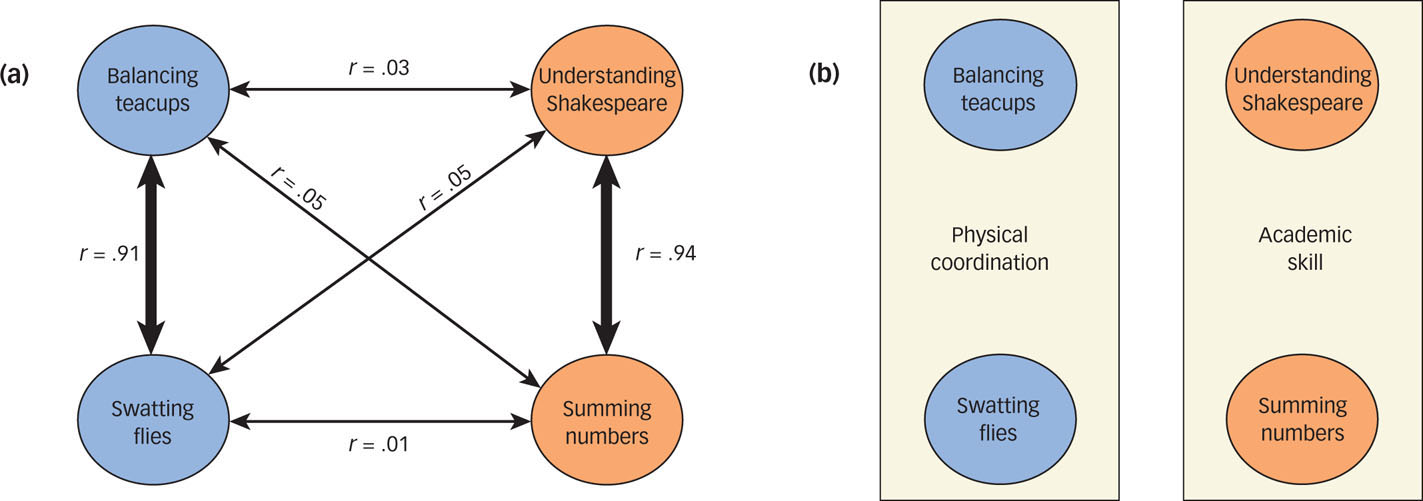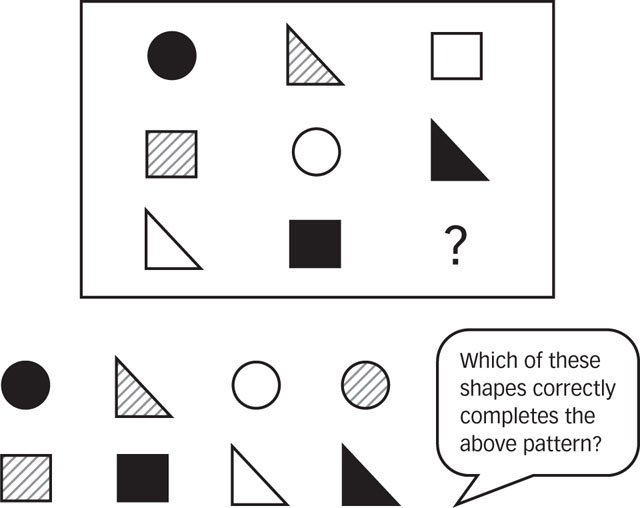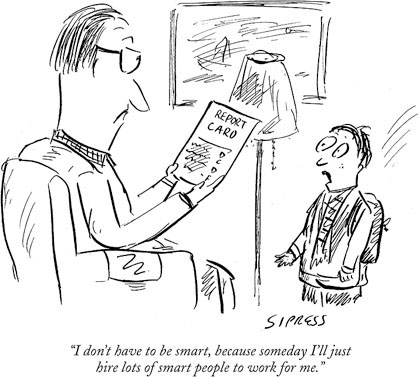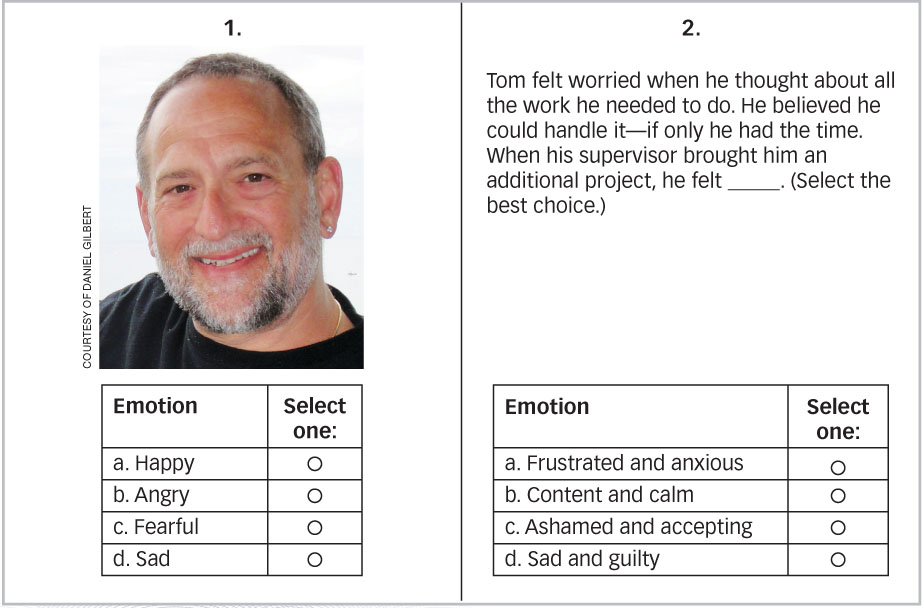10.2 What Is Intelligence?

During the 1990s, Michael Jordan won the National Basketball Association’s Most Valuable Player award five times, led the Chicago Bulls to six league championships, and had the highest regular season scoring average in the history of the game. The Associated Press named him the second-
Michael Jordan’s brilliance on the basketball court and his mediocrity on the baseball field proved beyond all doubt that these two sports require different abilities that are not necessarily possessed by the same individual. But if basketball and baseball require different abilities, then what does it mean to say that someone is the greatest athlete of the century? Is athleticism a meaningless abstraction? The science of intelligence has grappled with a similar question for more than a hundred years. As we have seen, intelligence test scores predict important outcomes, from academic success to longevity. But is that because they measure a real property of the human mind, or is intelligence just a meaningless abstraction?
A Hierarchy of Abilities
Charles Spearman was a student of Wilhelm Wundt (who founded the first experimental psychology laboratory), and he set out to answer precisely this question. Spearman invented a technique known as factor analysis, which is a statistical technique that explains a large number of correlations in terms of a small number of underlying factors. (We’ll get into a bit more detail about this in the next section.) Although Spearman’s technique was complex, his reasoning was simple: If there really is a single, general ability called intelligence that enables people to perform a variety of intelligent behaviors, then those who have this ability should do well at just about everything and those who lack it should do well at just about nothing. In other words, if intelligence is a single, general ability, then there should be a very strong positive correlation between people’s performances on all kinds of tests.

402
To find out if there was, Spearman (1904) measured how well school-
| Primary Mental Ability | Description |
|---|---|
| Word Fluency | Ability to solve anagrams and to find rhymes, etc. |
| Verbal Comprehension | Ability to understand words and sentences |
| Numerical Ability | Ability to make mental and other numerical computations |
| Spatial Visualization | Ability to visualize a complex shape in various orientations |
| Associative Memory | Ability to recall verbal material, learn pairs of unrelated words, etc. |
| Perceptual Speed | Ability to detect visual details quickly |
| Reasoning | Ability to induce a general rule from a few instances |
As sensible as Spearman’s conclusions were, not everyone agreed with them. Louis Thurstone (1938) noticed that, although scores on most tests were indeed positively correlated, scores on one kind of verbal test were more highly correlated with scores on another kind of verbal test than they were with scores on perceptual tests. Thurstone took this “clustering of correlations” to mean that there was actually no such thing as g and that there were, instead, a few stable and independent mental abilities such as perceptual ability, verbal ability, and numerical ability, which he called the primary mental abilities. These primary mental abilities were neither general like g (e.g., a person might have strong verbal abilities and weak numerical abilities), nor specific like s (e.g., a person who had strong verbal abilities tended both to speak and read well). In essence, Thurstone argued that just as we have games called baseball and basketball but no game called athletics, so we have abilities such as verbal ability and perceptual ability but no general ability called intelligence. TABLE 10.2 shows the primary mental abilities that Thurstone identified.
How was the debate between Spearman and Thurstone resolved?
The debate among Spearman, Thurstone, and other mathematical giants was quite technical, and it raged for half a century as psychologists debated the existence of g. But in the 1980s, a new mathematical technique called confirmatory factor analysis brought the debate to a quiet close by revealing that Spearman and Thurstone had each been right in his own way. Specifically, this new technique showed that the correlations between scores on different mental ability tests are best described by a three-

 Figure 10.2: A Three-
Figure 10.2: A Three-403
The Middle-Level Abilities
Michael Jordan played basketball much better than baseball, but he played both sports much better than most people can. His specific abilities allowed him to be more successful at one sport than another, but his general ability allowed him to outperform 99.9% of the world’s population on both the court and the field. It is easy to see that Michael Jordan had both specific abilities (dribbling) and a general ability (athleticism), but it is not so easy to say precisely what his middle-
Similar questions arise when we consider intelligence. Most psychologists agree that there are very specific mental abilities as well as a very general mental ability and that one of the important challenges is to describe the middle-
404
The Data-Based Approach
One way to determine the nature of the middle-

 Figure 10.3: Patterns of Correlation Can Reveal Middle-
Figure 10.3: Patterns of Correlation Can Reveal Middle-How do patterns of correlation reveal the middle-
This pattern suggests that a person who can swat flies well can also balance teacups well and that a person who can understand Shakespeare well can also sum numbers well, but that a person who can swat flies well and balance teacups well may or may not be able to sum numbers or understand Shakespeare well. From this pattern, we could conclude that there are two middle-
In the real world, of course, there are more than four tests. So what kinds of patterns do we observe when we calculate the correlations between the tests of mental ability that psychologists actually use? This is precisely what psychologist John Carroll (1993) set out to discover in his landmark analysis of intelligence test scores from nearly 500 studies conducted over a half century. Carroll found that the pattern of correlations among these tests suggested the existence of eight independent middle-
405
Although most of the abilities on this list are self-

 Figure 10.4: Raven’s Progressive Matrices Test This item from Raven’s Progressive Matrices Test measures nonverbal reasoning abilities and is unlikely to be culturally biased.
Figure 10.4: Raven’s Progressive Matrices Test This item from Raven’s Progressive Matrices Test measures nonverbal reasoning abilities and is unlikely to be culturally biased.
The Theory-Based Approach
What are the advantages of a theory-

The data-
Psychologist Robert Sternberg (1999) has argued that, in fact, there are three kinds of intelligence, only one of which is measured by standard intelligence tests. Analytic intelligence is the ability to identify and define problems and to find strategies for solving them; practical intelligence is the ability to apply and implement these solutions in everyday settings; and creative intelligence is the ability to generate solutions that other people do not. According to Sternberg, standard intelligence tests typically confront people with clearly defined problems that have one right answer and then supply all the information needed to solve them. These kinds of problems measure analytic intelligence. But everyday life confronts people with situations in which they must formulate the problem, find the information needed to solve it, and then choose among multiple acceptable solutions. These situations require practical and creative intelligence. Some studies suggest that these different kinds of intelligence are independent. For example, workers at milk-

406
What skills are particularly strong in emotionally intelligent people?

Of course, not all of the problems that intelligence enables us to solve are analytical, practical, or creative. For instance, how do you tell a friend that she talks too much without hurting her feelings? How do you cheer yourself up after failing a test? How do you know whether you are feeling anxious or angry? Psychologists John Mayer and Peter Salovey define emotional intelligence as the ability to reason about emotions and to use emotions to enhance reasoning (Mayer, Roberts, & Barsade, 2008; Salovey & Grewal, 2005). Emotionally intelligent people know what kinds of emotions a particular event will trigger, they can identify, describe, and manage their emotions, they know how to use their emotions to improve their decisions, and they can identify other people’s emotions from facial expressions and tones of voice. Furthermore, they do all this quite easily, which is why emotionally intelligent people show less neural activity when solving emotional problems than emotionally unintelligent people do (Jausovec & Jausovec, 2005; Jausovec, Jausovec, & Gerlic, 2001). These skills are also quite important for social relationships. Emotionally intelligent people have better social skills and more friends (Eisenberg et al., 2000; Mestre et al., 2006; Schultz, Izard, & Bear, 2004), they are judged to be more competent in their interactions (Brackett et al., 2006), and they have better romantic relationships (Brackett, Warner, & Bosco, 2005) and workplace relationships (Elfenbein et al., 2007; Lopes et al., 2006). Given all this, it isn’t surprising that emotionally intelligent people tend to be happier (Brackett & Mayer, 2003; Brackett et al., 2006) and more satisfied with their lives (Ciarrochi, Chan, & Caputi, 2000; Mayer, Caruso, & Salovey, 1999).
How does the concept of intelligence differ across cultures?

The data-
407
 People who score well on one test of mental ability usually score well on others, which suggests that there is a property called g (general intelligence).
People who score well on one test of mental ability usually score well on others, which suggests that there is a property called g (general intelligence). People who score well on one test of mental ability don’t always score well on others, which suggests that there are properties called s (specific abilities).
People who score well on one test of mental ability don’t always score well on others, which suggests that there are properties called s (specific abilities). Research reveals that between g and s are several middle-
Research reveals that between g and s are several middle-level abilities . The data-
The data-based approach suggests that there are eight middle-level abilities.  The theory-
The theory-based approach suggests that there may be middle-level abilities that standard intelligence tests don’t measure, such as practical, creative, and emotional intelligence. Non- Western cultures may include measures of social responsibility and cooperation in their definitions of intelligence.